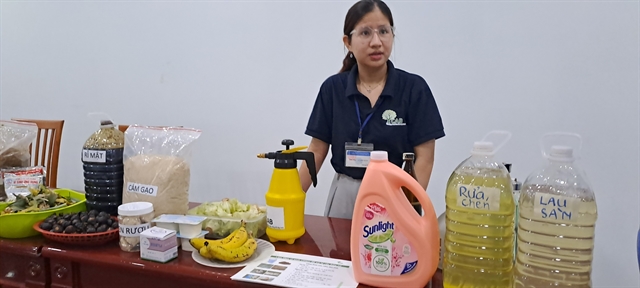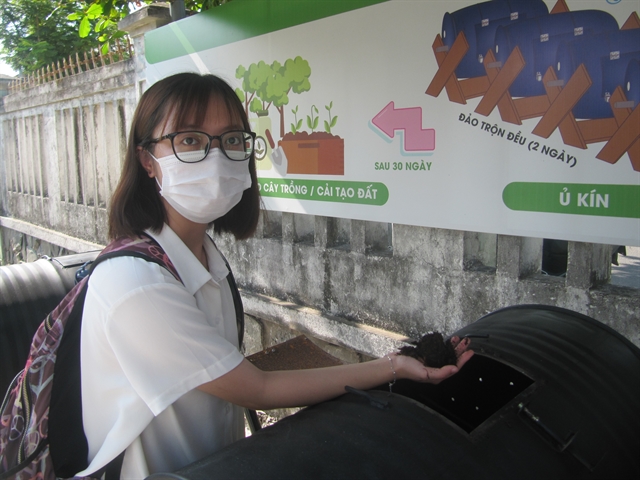 Society
Society

 |
| An exhibition of kitchen waste treatment plans at school in Đà Nẵng. A total of 20 primary schools in Đà Nẵng joined the ‘green’ school pilot project, under the ‘clean city, clean ocean’ programme funded by the USAID, in the city. VNS Photo Công Thành |
ĐÀ NẴNG – A total 11.7 tonnes of garbage including 0.7 tonnes of plastic waste have been collected for classification at source, while 1,200 teachers and 24,000 primary school students at 20 schools in the central city took part in the scheme to make their schools greener.
A report on the school pilot project, under the theme 'Clean Cities, Blue Ocean', funded by USAID's flagship programme, which aims to combat ocean plastic pollution, has been released after eight months of operation.
The programme is now being rolled out to different schools, including secondary and high school levels.
 |
| Two dustbins with classification at source are built at a primary school in Đà Nẵng. The city plans to expand waste classification across almost all schools in the city. VNS Photo Công Thành |
More than 2,000 educational sessions and 65 events showing ways to treat waste along with the 3Rs (reduce, re-use and recycle) were organised to raise awareness among school students, teachers and the community, along with big pushes on social media.
Trần Mai Trang, from the Live&Learn centre, said the programme had helped reduce by 17 per cent the amount of waste released into the environment, while also collecting valuable organic waste for composting.
“The programme introduced effective solutions in management of waste at school – an initial step to approach to ‘zero waste’ goal in the future. School students are aware of the importance of waste classification and environment protection by actions,” she said.
“Some schools included waste audits and waste reduction activities as part of their daily action programme. Glass bottles and LED screens were used instead of plastic containers and backdrops, respectively,” she said.
Students were encouraged to bring food boxes and bottles to school rather than using single-use plastic ware, she added.
 |
| Kitchen waste is collected to make compost at a school in Cẩm Lệ District. About 20 schools in the city begin waste collection and classification at source in 2023-24. VNS Photo Công Thành |
According to the report, the programme collected 5.9 tonnes of organic waste, 5.8 tonnes of waste (paper, cans, metal) for recycling and 630kg electronic waste.
The programme will now be rolled out to most of the other schools throughout the city, towards building Đà Nẵng as a ‘green’ school brand in central Việt Nam and a key example for other provinces and cites to follow.
The primary school of Trần Đại Nghĩa was the first school in the city to trial the waste treatment plans under the Waste-Free Schools model of the Building Healthy City (BHC) programme – one of East Meets West Organisation's key programmes in building a healthy and clean study environment for 12 primary schools.
The school applied a recycling kitchen system to reduce 60 per cent of waste every month, saving US$43 in garbage treatment fees, while producing 100kg of nutritional compost each month.
According to experts from Đà Nẵng University, 80 per cent of the daily 1,100-tonne waste in Đà Nẵng could be recycled by promoting waste classification at source.
At least 400 tonnes of organic waste, of which 50 per cent was biodegradable, could be collected by recycling sorting every day.
Lagom Việt Nam company and TetraPak said ten tonnes of milk cartons from schools in Đà Nẵng are available for collection for recycling every day. VNS




